 The journey into reading has been a bit unusual for my visual-spatial learners and I’ve learned some lessons along the way. I don’t know if there is a “typical” visual-spatial learner, but Linda Silverman sums it up quite well with this:
The journey into reading has been a bit unusual for my visual-spatial learners and I’ve learned some lessons along the way. I don’t know if there is a “typical” visual-spatial learner, but Linda Silverman sums it up quite well with this:
“The visual spatial learner thrives on complexity, yet struggles with easy material; loves difficult puzzles, but hates drill and repetition; is great at geometry and physics, but poor at phonics and spelling. She has keen visual memory, but poor auditory memory; is creative and imaginative, but inattentive in class; is a systems thinker, all the while disorganized, forgets the details. He excels in math analysis, but is poor at calculation; has high reading comprehension, but low word recognition; has an excellent sense of humor, and performs poorly on timed tests.”
My oldest visual-spatial learner is now in 5th grade and aside from a few deviations, this description is pretty accurate. His reading journey has been interesting and has taught me quite a bit. I’m doing a few things differently with my younger visual-spatial learner who is now in 1st grade.
While every visual-spatial learner is different, these are some of the things I noticed about my visual-spatial learner in his development of literacy. (Math is a whole different story!):
- Early writer: He learned how to write all of the letters of the alphabet on his own at a young age.
- Poor handwriting: He had tons of reversals and letters formed from bottom to top. The pencil was also not held correctly. We are still working quite a bit on handwriting in 5th grade.
- Early recognition of words by sight.
- Learned most of the letter sounds by playing educational games.
- Reading took off after basic phonics instruction.
- Phonics was difficult and lagged far behind his reading
- He learned grammatical concepts through learning grammar in a foreign language.
- Spelling was creative and continued to be difficult even with focused instruction.
- Creative writing came quick and easy, but things like capitals and periods were ignored.
- Reading progress began to stall around the 5th-6th grade level
- Attention to chapter books read aloud was very difficult
- It was rare for him to pick up a book to read on his own.
When my son was little he would be constantly in motion as I attempted to read a chapter book aloud. He had little attention when the input was solely auditory. By the time he was in first grade, I decided to work with him on this skill and by the end of the year he had no difficulty listening to chapter books read aloud. It actually became an activity he really enjoyed.
When my son hit 5th or 6th grade level books, he was starting to get bogged down. He wasn’t paying attention to the story at all unless he was reading aloud. When I had him tell me what he read, he tried to remember every detail and grew frustrated because he couldn’t. He was trying to memorize all of the details. I discovered that he had difficulty visualizing the books he was reading. We started to work with Visualizing and Verbalizing when I discovered that my son could comprehend and retell a story with great accuracy if he visualized it. We spent last school year focused on visualizing and this year he is reading chapter books with good comprehension and recall. I am now slowly increasing the reading level of the books.
In the past year he has also started to show interest in reading on his own. When I saw him starting to pick up a book to read in his free time, I noticed what he read and fed his interests. The books he chose were highly visual, of course. Garfield, Calvin and Hobbes, and encyclopedia-style books were well loved. I just kept getting him more and more and he started to read more and more. I often find him reading now. He likes it. He used to complain when his brother wanted to read instead of play with him. Now he reads more than his brother!
Classical Writing Aesop has really helped him learn to write using punctuation and capitalization. I spent years teaching and reminding him to use capitals and periods with little to show for it. Classical Writing has helped me be more consistent with instruction and the step-by-step manner that it uses actually helps him quite a bit. While he is a big picture kind of kid, I’ve noticed that some areas require step-by-step instruction to be effective.
My younger visual-spatial learner has a few different characteristics than my older child, but is very much a visual-spatial learner. She was also an early writer and has difficulty with handwriting. She has even done some mirror writing without realizing that the word was completely backwards. My older son did that too. My 6 year old writes creative stories for fun, but is more in tune with capitals and periods. Her phonics skills trail quite a bit behind her reading skills too.
I’m attempting to do a few things different with my 1st grader. I’m doing these things with her now:
- Taking things slowly. We are going through readers at a slow pace. My hypothesis is that this will give her mind more time to absorb new concepts and build stronger connections. My daughter only reads to me about 3-4 times per week right now.
- Read alouds. I am encouraging my daughter to visualize the story as I read aloud chapter books.
- Phonics. Phonics instruction at a level where she doesn’t find things too difficult or too easy. I’m using a workbook-based curriculum that she mostly does on her own. She prefers to take a long time to complete a page with lots of detours for drawing and playing.
- Spelling. I started spelling instruction in Kindergarten and we are going through things at a slow pace. Right now I’m using All About Spelling.
- Whole-word reading. While I’m not fond of the whole-word approach by itself, I find it to be valuable to combine a whole-word reader like Dick and Jane with sounding things out. This has really helped my daughter progress with her reading.
- Handwriting. Well, I’m still trying to figure this one out.
- Keeping things interesting. My daughter finds the early readers to be quite dull, but I believe it is important to go slow right now. We usually go through an elaborate play schema to get the reading is done. For instance, she likes to play the part of the librarian at storytime while I play the part of an interrupting little kid that asks silly questions. This also means that it can take 3 times as long for her to read her book.
- Quiet book time. I’m feeding her interests and giving her books to read that she likes. She may spend most of her time looking at the pictures and the page numbers, but sometimes she is interested enough to actually read the words on the page.
These are my current language arts curricula choices for my visual spatial learners.
5th Grader
Finish Classical Writing Aesop A, Classical Writing Aesop B, Finish Rod and Staff English 4, Start Rod and Staff English 6 (grammar only), Movies as Literature, Megawords 1-2, Evan-Moore Daily Handwriting Practice Modern Manuscript, Evan-Moore Daily Handwriting Practice Modern Cursive, Mindsnaps Vocab app
Reading with an emphasis on visualization: Trumpet of the Swan, Old Yeller, Phantom Tollbooth, Tuck Everlasting, Anne of Green Gables, The Lion, the Witch, and the Wardrobe, Cheaper by the Dozen, Wizard of Oz, I Am David
1st Grader
Language Arts: Finish Steck-Vaughn Phonics A, Steck-Vaughn Phonics B, Finish Write About Me, Write About My World, maybe start Just Write 1, Handwriting with StartWrite Handwriting Software
, Mad Libs, Finish All About Spelling Level 1, Rod and Staff Spelling 2, Reading
Read Alouds – Paddington Abroad, Winnie the Pooh, Pippi Longstocking, Mrs. Piggle Wiggle, Capyboppy, Trumpet of the Swan, Stuart Little, Little House in the Big Woods, Little House on the Prairie, James Harriot’s Treasury for Children, The Lion, the Witch, and the Wardrobe, Prince Caspian, Mr. Popper’s Penguins, Peter Pan, The Reluctant Dragon, American Tall Tales, Now we are Six, Heidi, Runny Babbit, James and the Giant Peach, Just So Stories, The Jungle Book, Lassie Come Home (This list should last us more than a year).
There are still some things I’m puzzling through with my 5th grader and wondering about with my 1st grader. I don’t know if I will ever arrive at the point where I will know exactly how to guide their learning so they are successful and engaged. But, I’m moving in that direction and will keep adapting and shifting things as I attempt to help them learn. I’ve found that in order to best meet the needs of my visual-spatial learners, I have to think outside the box because that is where they usually learn.
This past year has been one of many successes. I feel like I finally have a grasp and understanding of my 5th grader’s reading skills. I’ve attempted to find our footing there for awhile now. Spelling and grammar are starting to come together too. Maybe maturity is a big part of the progress. I can’t say, but I can say that I’m happy about the progress.
I’d love to hear your thoughts about teaching visual-spatial learners. What have you learned on your journey?
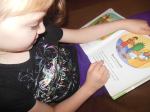
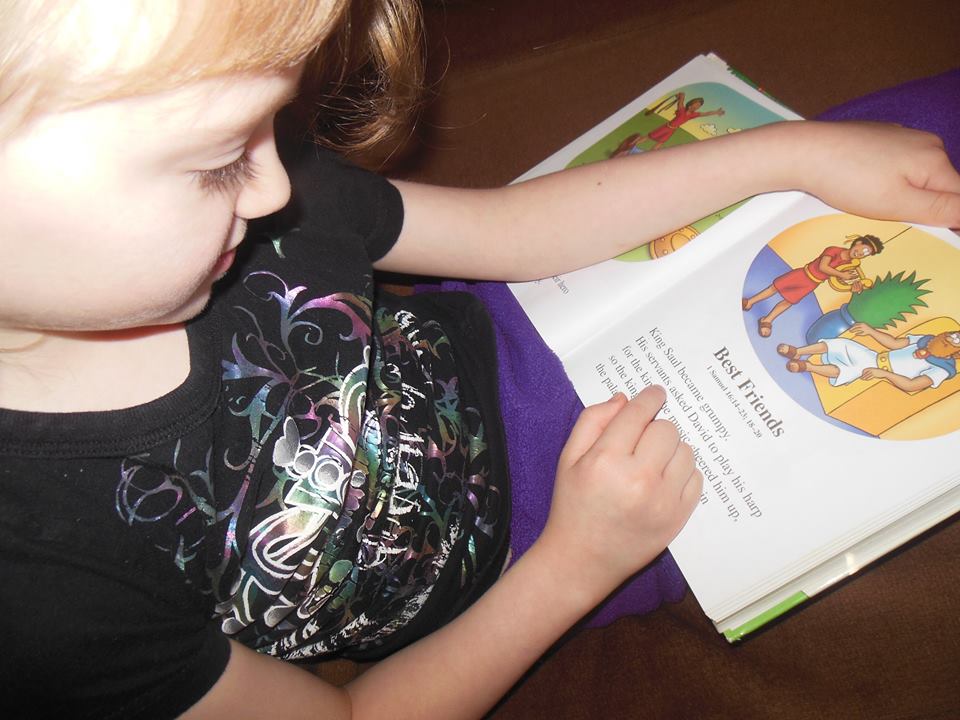


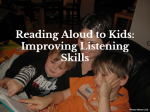
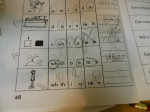
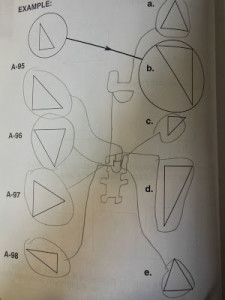
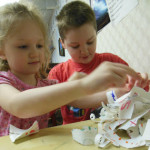
I have a 5th grader who has struggled in school since kindergarten and I am finally realizing that she is a visual-spatial learner. My question. She is like your older son, loves to read Japanese Manga and comics instead of regular books. We wondered if she should be reading novels to practice and get ready for middle school, and her teacher agreed with us. I’ve tried many different kinds of books, and she is bored right away and won’t stick with it. It’s now become a fight, and I’m afraid she will hate reading completely. How do you get your 5th grader to read these kinds of books? Thank you!
If she is like my son, my son had difficulty with novels because he wasn’t picturing the story in his head as he read. He was just reading the words and trying to make sense and pay attention to the story line without utilizing visualization. Everything changed when I started teaching him how to visualize as he reads. We started with Visualizing and Verbalizing and then moved onto real books. It took about a year, but he is reading well now. I wrote some about it here. I hope it is helpful. http://eclectic-homeschool.com/reading-comprehension-and-attention-in-the-visual-spatial-learner/
Your little guy sounds a lot like mine, especially in his early development. We are trying to work on listening skills right now, primarily through read alouds just as you suggested. Great post!
Thanks! I have been enjoying your blog 🙂